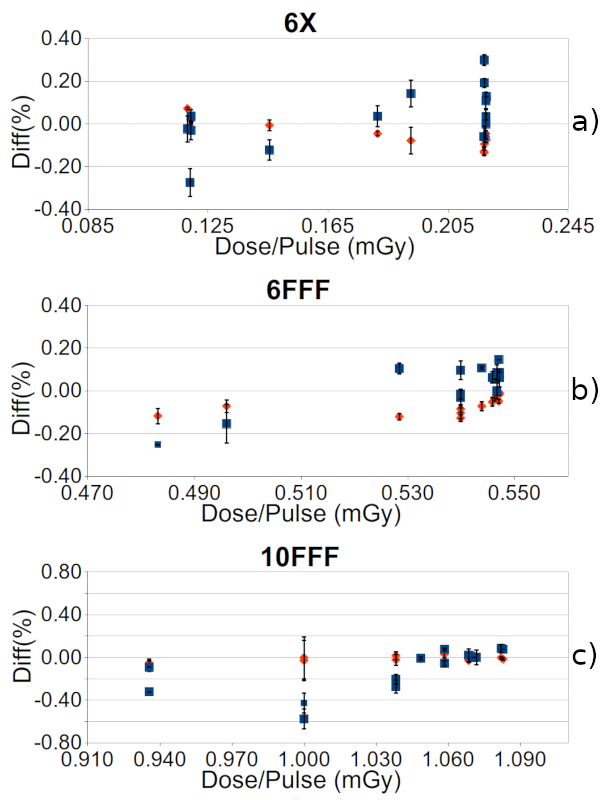A study of the impact of the dose per pulse on two different detectors for patient-specific QA
Manuel Angel Benito Bejarano,
Spain
PO-1784
Abstract
A study of the impact of the dose per pulse on two different detectors for patient-specific QA
Authors: Manuel Angel Benito Bejarano1, Fernando Gomez Enriquez2, Francisco Saez Beltran1
1Complejo Asistencial de Zamora, Medical Physics, Zamora, Spain; 2Hospital Universitario Marqués de Valdecilla, Medical Physics, Santander, Spain
Show Affiliations
Hide Affiliations
Purpose or Objective
The Truebeam linear accelerator (Varian Medical Systems) has two internal modes of operation to generate the modulation of the dose rate during VMAT treatment delivery. The influence of these modes over the dose response on a diode array and an ion chamber has been studied.
Material and Methods
In the Truebeam the maximum dose rate of a given energy is achieved by generating a dose pulse for each radiofrequency pulse received from the modulator. In the first mode, the dose rate is modulated by dropping dose pulses for some radiofrequency pulses. In the second mode, in addition, the pulse amplitude is modified. The Delta4 Phantom+ (DPh+, Scandidos AB) is a biplanar diode array with 1069 p-type diodes, distributed in two orthogonal planes, embedded in a PMMA cylinder. The other measurement assembly consists of a PTW Semiflex TM31010 ion chamber (PTW Freiburg GmbH) inserted in a cylindrical solid water phantom. Two arc therapy plans with multiple beams have been created for the 6 MV, 6FFF and 10FFF energies, aiming to force dose rate modulation in each of the two modes. The DPh+ has been used to measure the delivered dose and the pulse repetition frequency (PRF) for each dose rate setting, in both operating modes. Based on these data, the dose per pulse (DPP) has been obtained and employing the formalism described in DIN 6800-2 the saturation factor for the Semiflex chamber has been determined. The dose measurements with both systems have been compared.
Results
The Truebeam accelerator automatically selected the mode of operation regardless of the nominal rate setting specified in the plan. Thus, the variation of the saturation factor for the Semiflex was less than 0.1% over the entire dose rate range. The effect of DPP on the measured doses was less than 0.6% for the Semiflex chamber and 0.2% for DPh+ in all cases. The Truebeam accelerator modulates the rate in a way that limits DPP fluctuations as much as possible, so on detectors with saturation effects that only depend on the DPP such as the Semiflex, the variation in saturation is negligible. The Delta4 Phantom+ also has no significant dose rate or DPP dependence and thus is very convenient for VMAT patient-specific QA verifications.

Figure 1: Deviation of measured dose versus pulse dose for both detectors (Semiflex-blue squares, Delta4-red diamonds). Values for 6MV (a), 6FFF (b) and 10FFF (c) beams. The dose measured at the maximum dose rate was used as the reference.
Conclusion
The dose rate management modes in the Truebeam perform in such a way that both types of detectors studied operate optimally for VMAT delivery QA, irrespective of the range of dose rates used in the plan.